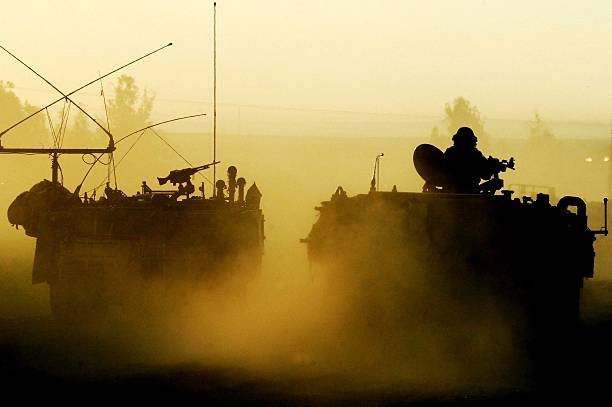Thailand-Cambodia Conflict: The Thailand-Cambodia war, often referred to as the Thailand-Cambodia border conflict, is a long-standing and complex dispute rooted in territorial claims, nationalism, and historical grievances. While both nations share a rich cultural history and centuries of interaction, certain flashpoints, particularly around temple sites, have ignited deadly clashes. This blog explores the origins, major events, and current status of the Thailand-Cambodia conflict in detail.

Historical Background:
At the heart of the Thailand-Cambodia conflict is the Preah Vihear Temple, a Hindu temple dating back to the 11th century, located near the border between the two countries. The temple was awarded to Cambodia by the International Court of Justice (ICJ) in 1962, but the surrounding territory—especially a 4.6-square-kilometer area near the temple—remained contested.
Thailand, formerly Siam, and Cambodia have a complex shared past. Both nations have seen their borders shift over centuries due to colonization, war, and political treaties. When Cambodia became a French protectorate in the 19th century, the French demarcated borders that favored Cambodia. Thailand has never fully accepted some of these boundaries, leading to persistent tension.
The Spark: Listing Preah Vihear as a UNESCO Site
In 2008, tensions reignited when Cambodia succeeded in having Preah Vihear Temple recognized as a UNESCO World Heritage Site. Thailand opposed the move, claiming that the listing could imply Cambodian sovereignty over disputed border areas. This decision fueled nationalist sentiment in Thailand and led to military buildups near the border.
Soon after, clashes broke out between Thai and Cambodian soldiers, leading to casualties on both sides and the displacement of thousands of civilians. These border skirmishes intensified between 2008 and 2011, making the region one of Southeast Asia’s most dangerous flashpoints.
2008–2011 Armed Clashes:
During this period, the border dispute escalated into several armed confrontations:
-
October 2008: The first major clash near Preah Vihear Temple led to injuries and the deaths of soldiers on both sides.
-
April 2009: Fighting resumed, resulting in more casualties.
-
February and April 2011: The most severe clashes took place near Preah Vihear and other temples, including Ta Moan and Ta Krabey, damaging the ancient structures and causing civilian panic. Hundreds of artillery shells were fired, and over 80,000 people were displaced.
Both sides accused each other of aggression and violating sovereignty, and peace seemed elusive despite multiple ceasefires.

International Mediation and Court Intervention:
In response to the escalation, ASEAN (Association of Southeast Asian Nations) attempted to mediate the conflict, but with limited success. Both Thailand and Cambodia are ASEAN members, but the organization’s principle of non-interference often hampered stronger intervention.
Cambodia then returned to the International Court of Justice (ICJ) in 2011, seeking clarification on the 1962 ruling. In 2013, the ICJ ruled that Cambodia has sovereignty over the whole promontory of Preah Vihear Temple, and that Thailand must withdraw any military presence from the area.
This verdict de-escalated tensions and led to a significant reduction in hostilities. Both sides gradually began demilitarizing the area.
Current Status and Peace Efforts:
Since the ICJ ruling, Thailand and Cambodia have largely respected the decision, and direct military confrontations have subsided. Joint border committees have been working on demarcating the disputed regions, though progress has been slow due to domestic politics in both countries.
Today, the Preah Vihear area is more accessible to tourists, and cooperation between the two nations has improved. However, occasional tensions still arise, especially during political instability or nationalist rhetoric.
Efforts are ongoing to promote economic cooperation, including cross-border trade, tourism, and infrastructure development. These joint ventures are seen as ways to build mutual trust and reduce the risk of future conflict.
Underlying Issues and Lessons Learned:
The Thailand-Cambodia conflict illustrates how historical grievances, nationalism, and unclear borders can lead to prolonged hostilities. Despite multiple peace attempts, true reconciliation remains a challenge.
Key lessons from the conflict include:
-
The importance of international mediation, especially by neutral bodies like the ICJ.
-
The dangers of politicizing border disputes for domestic gains.
-
The need for ASEAN to strengthen its conflict-resolution mechanisms.
Cultural heritage sites like Preah Vihear can become symbols of national identity, making disputes over them especially sensitive. Preserving such sites while ensuring peace requires careful diplomacy and mutual respect.
The Thailand-Cambodia war may not be an ongoing full-scale conflict, but the tensions that fueled it have deep roots. Thanks to international rulings and growing economic ties, peace has prevailed in recent years. Yet, the situation remains fragile, and constant diplomatic engagement is needed to prevent future flare-ups.
As both nations continue to heal from their turbulent past, Preah Vihear stands not just as a monument of history—but as a reminder of the cost of conflict and the value of peace.
ऐसे और भी Global लेखों के लिए हमारे साथ जुड़े रहें! Khabari bandhu पर पढ़ें देश-दुनिया की ताज़ा ख़बरें — बिज़नेस, एजुकेशन, मनोरंजन, धर्म, क्रिकेट, राशिफल और भी बहुत कुछ।

